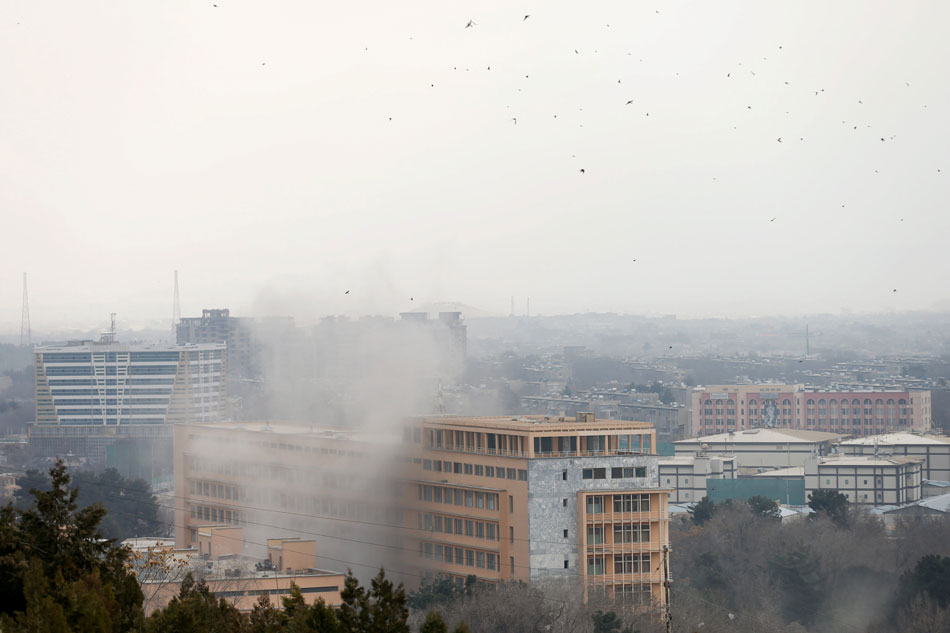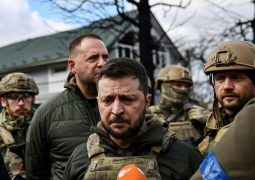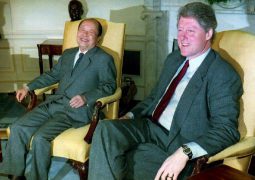Afghan Officials Say at Least 50 Died in Attack on Hospital

In addition, 24 people have been arrested in connection with the March 8 attack, including Afghan generals, according to Lt. Gen. Helaludin Helal, the country’s deputy minister of defense for strategic and intelligence affairs. The arrests were for a variety of charges including negligence, incompetence and complicity, General Helal said at a contentious news conference.
The news conference was called after Afghan news reports and social media accounts suggested that the casualty toll was actually in the hundreds; that three hospitalized Afghan generals were among those killed by the attackers; and that the minister of defense, Abdullah Habibi, had personally signed the V.I.P. vehicle pass that allowed the attackers to enter the heavily guarded hospital complex in a car packed with explosives and weapons.
The reports seemed to be fueled partly by contradictory government claims immediately after the attack that only two people had died, a number many officials stuck to even after personnel at the Ministry of Defense confirmed that at least 31 people were dead.
In addition, it took the authorities seven hours to quell the attack, leaving the armed insurgents prowling Sardar Daud Khan Hospital for hours, hunting down patients and medical staff members in the 400-bed facility, which is usually full or nearly so.
General Helal maintained that the news reports in general were distorted and incorrect, without getting into specifics. As the questioning grew heated, General Helal abruptly left, leaving the Defense Ministry spokesman, Maj. Gen. Dawlat Waziri, to take over.
General Waziri confirmed that officials were investigating the possibility that the attack was carried out by insiders, but he did not directly address assertions that doctors working at the hospital were involved. He did not identify the generals who were arrested, and did not say how many generals were arrested or what the charges were.
He confirmed that the attackers brought their vehicle, a red Toyota Corolla, into the hospital compound in Kabul using an official pass, which he described as “fake.”
One of the five attackers detonated their explosives-laden car with a remote-controlled device as they entered the hospital grounds dressed in white medical clothing, according to the official accounts. They then carried out the attack using guns, grenades and suicide vests, at least one of which detonated.
The authorities said all five attackers were killed, but Afghans have widely questioned that assertion as well, and raised questions about whether wounded Taliban prisoners who had been in the hospital might have escaped.
The victims’ names have not been made public by the government, further fanning speculation about a higher death toll. Some names have emerged. One victim was Gen. Daud Askaryar, who recently retired after six years as head of the National Police Academy, according to his son, Mohammad Maroof Askaryar, who was visiting him at the time of the attack and hid in a bathroom to escape being killed. His father, he said, was stabbed to death through his oxygen tent in the intensive care unit.
“The number of those killed is way higher than 50,” said Jawed Kohistani, a former general who is a military analyst with wide connections among the Afghan security forces.
A retired general who is currently a member of Parliament, Nazifa Zaki, also disputed the official figure. “I believe 200 people were martyred in the hospital,” Ms. Zaki said. “This is what I heard from eyewitnesses and those who went to the hospital and funerals of the martyred.”
Much of the public ire has been directed at the country’s defense minister, General Habibi, a former Communist-era general appointed by President Ashraf Ghani, especially after reports that the general had signed the vehicle pass for the attackers.
Members of Parliament have derided General Habibi, who is 64, for apparently sleeping through official meetings in the middle of a war, charges backed up by photos posted on local social media posts showing him apparently dozing off on the job. One shows him sleeping next to Mr. Ghani at an official function.
“He should just go to a mosque and catch up on his sleep,” said Allah Gul Mujahid, another member of Parliament. “We need shrewd and active generals to lead the forces. This is not the place for him.”
Afghans were also critical of the country’s chief executive, Abdullah Abdullah, for posing for selfies with soldiers in front of the hospital immediately after the attack.
The furor over the military hospital attack has underscored public disenchantment with the coalition government. It has struggled for more than a year to agree on a defense minister, and is two years overdue on holding national elections for Parliament.
The military situation has steadily worsened in the meantime, with historically high casualties on the government side; more and more districts that are dominated by insurgents; and growing numbers of Afghans who have been displaced by fighting.
The Islamic State claimed on one of its websites that it was responsible for the hospital attack, while the Taliban denied any role. Government officials, however, have blamed the Taliban, and General Helal said “we cannot deny” that one of the attackers shouted, “Long live the Taliban.”
The Islamic State, also known as ISIS, has a relatively small number of fighters in Afghanistan, mostly in the eastern province of Nangarhar. And while their members have carried out attacks in Kabul — such as one last July at a protest that killed 80 people — the hospital assault was more complex and sophisticated than anything the group has done before in Afghanistan.
- Previous Philippines can follow Australia’s balancing act
- Next Tourism to food, Buddhist Thailand hunts halal gold











